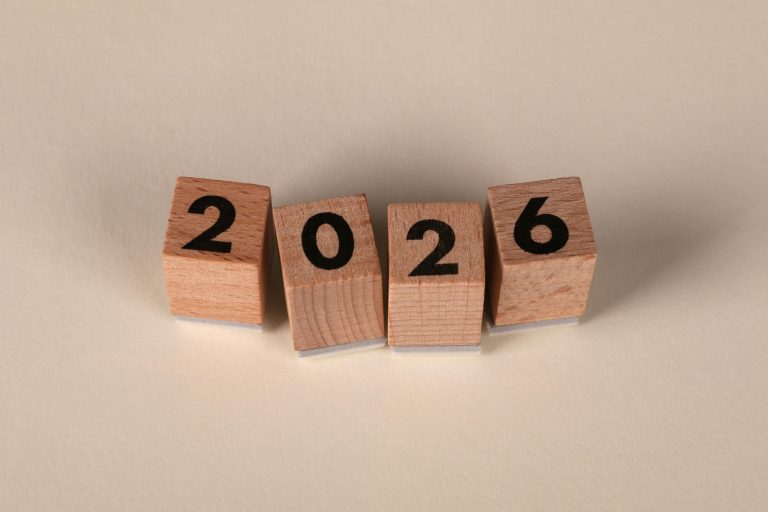Predictive forecasting is the use of data and statistical models to make predictions about future outcomes. It can be used in a variety of industries, including finance, retail, and the restaurant industry.
How long has predictive forecasting been around?
Predictive forecasting has been around for several decades, with early applications of the concept dating back to the 1950s. It has evolved significantly over the years, with the widespread adoption of data analytics and machine learning techniques leading to significant advancements in the accuracy and usefulness of predictive forecasts. In recent years, predictive forecasting has become increasingly important in a variety of industries, including finance, healthcare, and retail, as organizations seek to make informed decisions about the future based on data-driven insights.
The Evolution
In the early days of predictive forecasting, statistical techniques such as linear regression and time series analysis were used to make predictions based on historical data. These methods were useful for predicting outcomes such as sales or demand, but they were limited in their ability to handle complex data and adapt to changing circumstances.
In recent years, advances in machine learning and artificial intelligence have led to the development of more sophisticated predictive forecasting methods. These methods, such as decision trees, neural networks, and support vector machines, are able to analyze large and complex datasets and make more accurate predictions. They are also able to adapt and learn from new data as it becomes available, which allows them to continuously improve their accuracy over time.
Predictive forecasting has also become more widely available, with the development of software platforms and tools that make it easier for businesses to implement and use. These platforms often include user-friendly interfaces, visualization tools, and integration with other business systems, making it easier for businesses to get value from their predictive forecasting efforts.
Overall, the evolution of predictive forecasting has made it a more powerful and effective tool for businesses to use in a wide range of applications, including sales forecasting, demand planning, resource allocation, and risk management. It has also become more accessible, making it possible for businesses of all sizes to benefit from its capabilities.
Use-Cases
There are many different industries that use predictive forecasting, including:
- Finance: Predictive forecasting is commonly used in finance to predict things like stock prices, currency exchange rates, and interest rates.
- Retail: Retail businesses use predictive forecasting to predict consumer demand and optimize inventory management.
- Manufacturing: Manufacturers use predictive forecasting to predict demand for their products and optimize production schedules.
- Healthcare: Healthcare organizations use predictive forecasting to predict things like patient demand and hospital capacity.
- Energy: Energy companies use predictive forecasting to predict demand for energy and optimize their production and distribution.
- Supply chain management: Predictive forecasting is used in supply chain management to optimize the flow of goods and materials through the supply chain.
- Sports: Sports teams and organizations use predictive forecasting to predict things like player performance and team success.
Time Series Forecasting
Time series forecasting is a method of predictive forecasting that involves analyzing and modeling historical data to make predictions about future events. Time series forecasting is commonly used in a variety of industries, including finance, economics, and healthcare, to make informed decisions about future events and outcomes.
One of the key features of time series forecasting is that it takes into account the trend and seasonality of the data being analyzed. Trend refers to the overall direction of the data, whether it is increasing, decreasing, or staying relatively stable over time. Seasonality refers to patterns in the data that repeat over a specific time period, such as monthly or annually. By analyzing these trends and seasonality, time series forecasting can provide more accurate predictions about future events.
There are several different methods of time series forecasting, including:
- Naive method: This is the simplest method of time series forecasting, where the forecast for a future time period is simply the value of the last observed data point. This method is useful for understanding the baseline level of the data, but it does not take into account any trends or seasonality.
- Moving average method: This method involves calculating the average of a set of past data points, and using that average as the forecast for a future time period. This method is useful for smoothing out short-term fluctuations in the data, but it does not account for long-term trends or seasonality.
- Exponential smoothing: This method involves assigning a weight to each past data point, with more recent data points receiving a higher weight. This allows the model to more accurately reflect recent changes in the data, while still taking into account long-term trends and seasonality.
- Autoregressive integrated moving average (ARIMA): This is a more advanced method of time series forecasting that involves using past data points to model both the trend and seasonality of the data. ARIMA models are widely used in a variety of industries, and they can provide highly accurate forecasts for complex data sets.
Time series forecasting can be a powerful tool for businesses and organizations looking to make informed decisions about the future. By analyzing historical data and modeling trends and seasonality, time series forecasting can provide valuable insights and predictions that can help organizations plan for the future and make strategic decisions.
Regression analysis
Regression analysis is a statistical technique that involves finding the relationship between a dependent variable and one or more independent variables. This relationship is typically modeled using a linear equation, in which the dependent variable is a function of the independent variables.
To perform regression analysis, a dataset is collected that includes both the dependent variable and the independent variables. The relationship between these variables is then analyzed using statistical techniques, such as the least squares method, to determine the coefficients of the linear equation. These coefficients can then be used to predict the value of the dependent variable based on the values of the independent variables.
Regression analysis can be used in a variety of applications, including predicting sales based on marketing efforts, forecasting demand for a product based on historical data, and estimating the cost of a project based on various factors. It is a powerful tool for making predictions about the future, but it is important to be aware of its limitations. For example, it may not be accurate in situations where the relationship between the variables is non-linear, or when there are other factors that may influence the outcome.
Regression analysis is a useful method for predictive forecasting, but it is important to carefully consider the appropriateness of this method for a given problem and to be aware of its limitations. By understanding these issues and using appropriate statistical techniques, businesses can use regression analysis to make informed decisions and plan for the future.
Artificial Neural Networks
One of the key methods for predictive forecasting is the use of artificial neural networks (ANNs), which are computational models inspired by the structure and function of the human brain.
ANNs are composed of interconnected nodes, or “neurons,” that process and transmit information. These networks are able to learn from data by adjusting the strengths of the connections between neurons, allowing them to improve their predictions over time. ANNs are particularly useful for predictive forecasting because they can handle large amounts of data and handle complex, non-linear relationships between variables.
There are several types of ANNs that can be used for predictive forecasting, including feedforward neural networks, convolutional neural networks, and recurrent neural networks.
Feedforward neural networks are the most common type of ANNs used for predictive forecasting. These networks consist of an input layer, one or more hidden layers, and an output layer. The input layer receives the input data, and the hidden layers process the data and transmit it to the output layer, where the final prediction is made. The weights of the connections between the neurons are adjusted based on the error between the predicted output and the actual output, allowing the network to learn and improve its predictions over time.
Convolutional neural networks are a type of feedforward neural network that is particularly well-suited for processing data with a grid-like structure, such as images or time series data. These networks use convolutional layers, which apply a set of filters to the input data, extracting features that are relevant for the prediction task.
Recurrent neural networks are another type of ANNs that are well-suited for predictive forecasting tasks involving time series data. These networks have a feedback loop that allows them to process data in a sequential manner, taking into account the context of previous time steps. This makes them useful for tasks such as predicting stock prices or sales trends over time.
Predictive forecasting using ANNs requires a large amount of data and computational resources, but the results can be highly accurate and can provide valuable insights for businesses and organizations looking to make informed decisions about the future.
Machine Learning
Machine learning algorithms are a type of technology that can be used for predictive forecasting. There are several different types of machine learning algorithms that can be used for predictive forecasting, including:
- Linear regression: This algorithm is used to predict a continuous value, such as a stock price or sales revenue. It is based on the relationship between a dependent variable and one or more independent variables.
- Logistic regression: This algorithm is used to predict a binary outcome, such as whether a customer will churn or not. It is based on the probability of an event occurring, and can be used to classify data into two categories.
- Decision trees: This algorithm is used to make predictions based on a series of decisions. It starts with a root node, which is split into branches based on the values of certain features. Each branch is then further split into additional branches until a final prediction is made.
- Random forests: This algorithm is a type of decision tree, but it uses multiple decision trees working together to make predictions. This can improve the accuracy of the prediction compared to a single decision tree.
- K-nearest neighbors: This algorithm is used to classify data based on the characteristics of the data points that are closest to it. It is often used for classification tasks, such as determining the type of plant based on its characteristics.
- Support vector machines: This algorithm is used to classify data and find the hyperplane that best separates the data into different categories. It is often used for binary classification tasks.
- Artificial neural networks: This algorithm is inspired by the structure and function of the human brain. It is made up of layers of interconnected “neurons” that process and transmit information. Artificial neural networks are often used for tasks that are difficult for traditional algorithms, such as image recognition or natural language processing.
These are just a few examples of the machine learning algorithms that can be used for predictive forecasting. Each algorithm has its own strengths and limitations, and the best choice for a particular task will depend on the characteristics of the data and the type of prediction being made.
Using machine learning algorithms for predictive forecasting can be a powerful tool for businesses and organizations. By analyzing historical data and making predictions about the future, organizations can make more informed decisions and improve their operations.
The Future of Predictive Forecasting
The future of predictive forecasting looks bright, with the continued advancement and improvement of machine learning algorithms and the increasing availability of data. These developments will likely lead to more accurate and reliable predictions, which can be applied to a wider range of industries and scenarios.
One area where we are already seeing significant progress is in the use of big data and artificial intelligence (AI) for predictive forecasting. By analyzing large amounts of data, machine learning algorithms can identify patterns and trends that would be difficult or impossible for humans to discern. This allows for more sophisticated and accurate predictions, which can be used to make better business decisions and optimize operations.
Another trend we are likely to see in the future is the integration of predictive forecasting into everyday life. For example, we may see predictive algorithms being used to optimize traffic flow in cities, predict equipment failures in factories, or even to forecast the weather. By leveraging the power of predictive forecasting, we can make better decisions and more effectively allocate resources, leading to a more efficient and sustainable future.
Quantum computing has the potential to revolutionize many fields, including predictive forecasting. Quantum computers are able to perform certain calculations much faster than classical computers, which could potentially allow for more accurate and efficient predictive forecasting.
One potential application of quantum computing in predictive forecasting is in machine learning algorithms. Quantum machine learning algorithms have the potential to learn from data much faster and more accurately than classical algorithms. This could lead to more accurate and reliable predictive models for a variety of applications.
Another potential application is in the use of quantum annealing for optimization problems. In predictive forecasting, it is often necessary to optimize certain parameters in order to improve the accuracy of the forecast. Quantum annealing, which is a type of quantum optimization algorithm, has the potential to find the optimal solution to these types of problems much faster than classical algorithms.
While quantum computing is still in its early stages and there are many challenges that need to be overcome before it can be widely used, it is clear that it has the potential to greatly enhance the field of predictive forecasting.
Overall
In conclusion, predictive forecasting is a powerful tool that can help businesses make informed decisions about the future by analyzing data from the past and present. It has been around for decades, but has evolved significantly with the advancement of technology and the use of machine learning algorithms.
As the world becomes increasingly data-driven, the importance of predictive forecasting is only expected to grow. In the future, it is likely that we will see even more advanced techniques and technologies being used for predictive forecasting, potentially including the use of quantum computing. Ultimately, the goal of predictive forecasting is to provide businesses with the insights they need to make better decisions, reduce uncertainty, and stay ahead of the competition.








